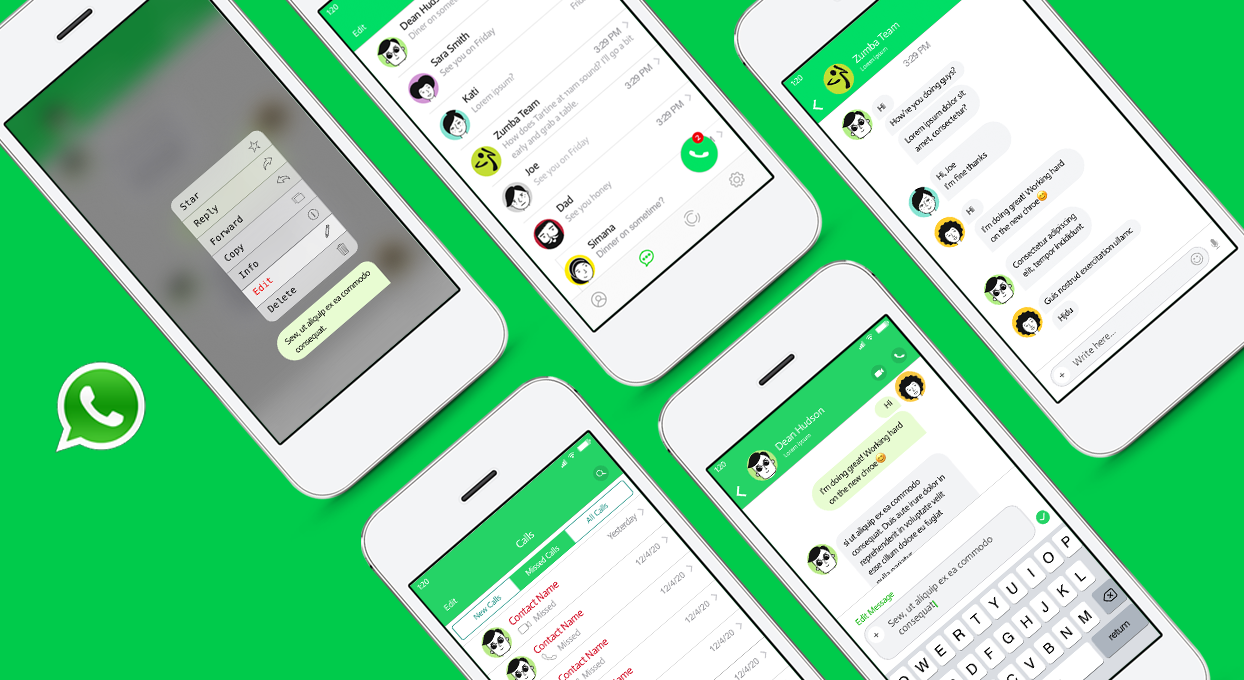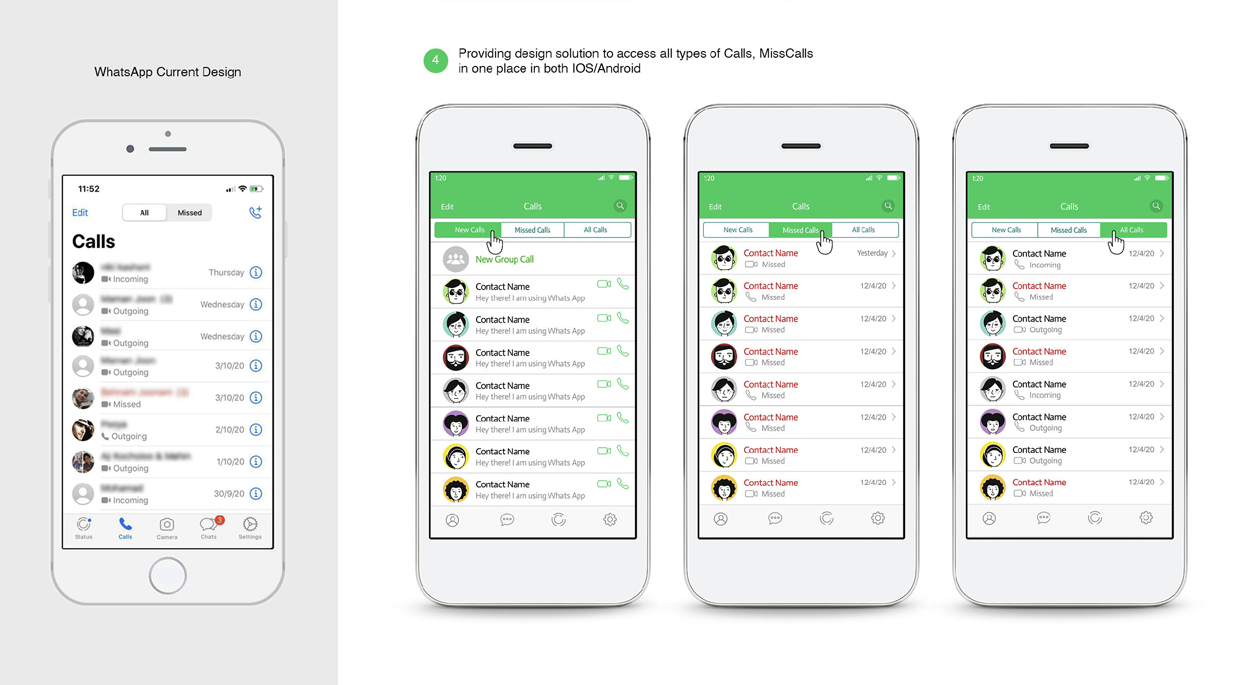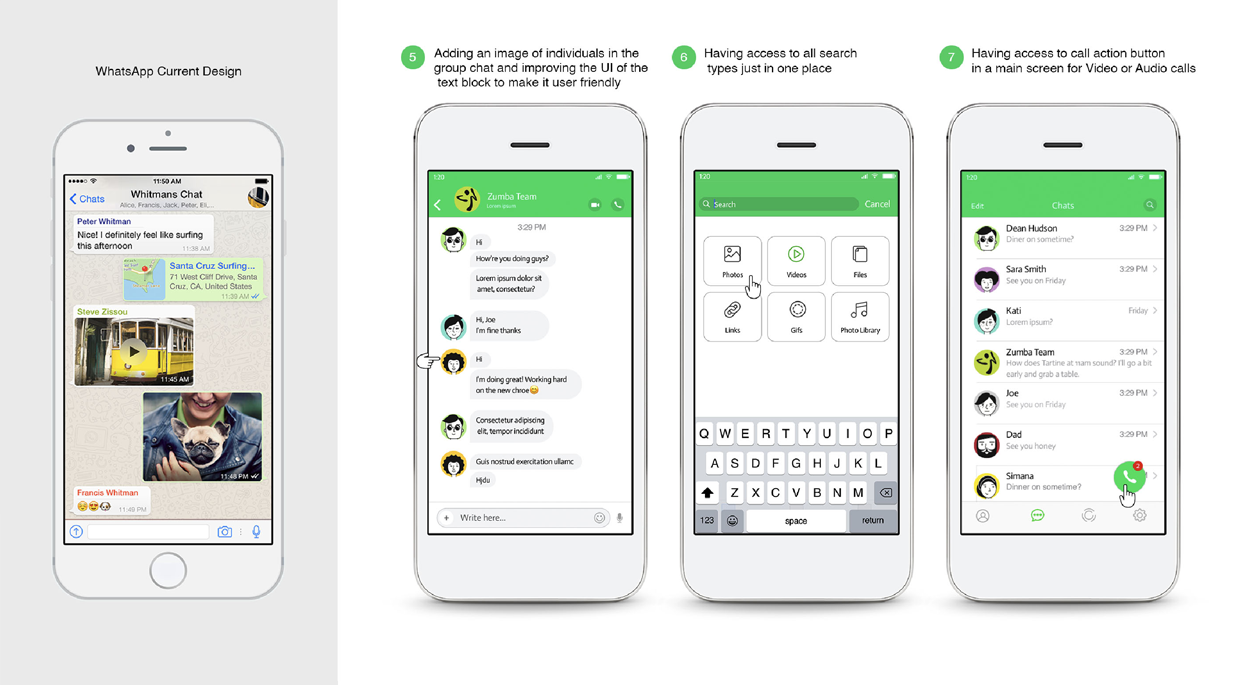


Course Name: Become a UX Designer from scratch
Design Tools: Sketch, Invision
Duration: 2 Weeks
Deliverables: User Research, User Experience Map, Persona, User Flow, Wireframes, Interactive Prototype
Have you ever thought about the way you communicate with others? Or the tools that you may use in this communication? Or the subject of your everyday communication? Who are you communicating with most? Every one of us uses our smartphones for communication every day. It became a crucial device in our everyday life; For calling, sharing our photos, videos, documents, work-related stuff or even our feelings through different apps. As I’m beginning my journey into the UX Design area, I started to observe critically different design patterns and solutions in existing instant messaging apps, and how to possibly improve certain aspects of the app that seem bothersome. Since this is a UX course project and not an actual design project with real stakeholders involved, the solutions I provided are entirely based on the Insights I gained from user research.
Improve existing solutions for "written communication apps" by using UX design techniques.
I used the “Design Thinking” process in order to get an initial direction in this project. I used this iterative process for understanding the user needs, challenges and pain-points in regard to their interaction with written communicating apps. Then I redefined problems, in order to identify alternative solutions that might not be instantly apparent with our initial level of understanding. I constantly iterated this process as I discovered new insights. I’ll describe the various work done during different phases in a linear structure: Empathies, Define, Ideate, Prototype, and Test.
I conducted semi-structured interviews with 10 participants aged from 30 to 40 , In order to build empathy with users and fully understand their needs, frustrations, hopes, limitations and goals perceptions and experiences . It was more of a casual conversation, and the questions that I had prepared before were mainly focused around how they use their phones to communicate or which communication apps they most use, whom they write messages to, what kind of messaged they write, if they have any problems and so on. To explore participants' points of view and eliciting their subjective opinion on a product or interaction I encouraged them to express their general thoughts as I took brief notes.
Findings:
• Talking, texting and emailing are the main modes of communication
• Video calls seem to be the most common method of communication as it feels like you're talking in person
• All of them seem to use messaging apps, rather than email as it seems, to be the most efficient, casual and quicker less formal use of communication
• They are texting when they are not looking for a quick response or some of them just for sharing knowledge mostly with forwarding other posts.
• Some of them found it difficult to convey their tone and express their feelings over text. They prefer to use emojis to express their feelings.
• There is no option for deleting messages or emails when already sent with typos included.
• For all participants most used communication app is WhatsApp/Instagram, mainly because of its Audio/Video call features
After conducting the interviews, I decided to pick WhatsApp as it was the one app that was common and was heavily used by all the participants.
I created a fictional character based on the data I gathered from my user research to represent user types that might use WhatsApp or any instant messaging app.
I extended the persona by also making a user experience map, which helped me in creating a scenario in which the user would usually use WhatsApp. This is a great way to find broken links and steps that need to be fixed.
Pain Point 1: WhatsApp provides most native experience on iOS/Android for making a short learning curve for new users. But for those users who switch between these platforms, might be confusing if they see the same app that they were using in their previous platform, doesn’t provide the exact same feeling and UI in their new platform. So in my opinion, the first problem to resolve is Improving the UI design to accommodate both platforms iOS/Android. I‘m not saying pixel-perfect consistency, but sticking to common design ideas and keeping the navigations of the app, similar for both platforms and trying to stick with native behavior wherever possible, would be a good approach.
Pain Point 2: Text messages are not editable in WhatsApp .In the other word if a user makes a mistake during typing after sending the message he can’t go back and fix their mistakes.
Pain Point 3: WhatsApp forwarding photo/video feature doesn’t let user to forward Photo/Videos with their captions in a different group
Before creating any wireframe, I went back to my user journey map and analyzed it using the SCAMPER method.
• Substitute
• Combine
• Adapt
• Merge
• Put To Another Use
• Eliminate
• Rearrange
I went down the SCAMPER list and asked questions regarding each of the seven elements. I applied those questions to any related aspect I thought of that has relevance to my ideation needs. Finally, I asked myself: do any of the answers I came up with stand out as viable solutions? Could I use any of them to improve the WhatsApp user experience?
After that, I started to plan my ideas visually. First, I created low-fidelity wireframes using paper and sharpen to iterate through design options quickly.



In this step, I tried to figure out if the ideas work if they make sense. So I built the interactive prototype in “InVision” software. Then I conducted another user's interviews to evaluate the ideas. Through the interview, I asked questions from participants and gave them some tasks to do. I mostly watched what they were doing and occasionally asked them questions, just to encourage them to think out loud. It helped me to understand if the ideas would solve their problems and is useful for them.
This project presented me with an opportunity to start working on my UX portfolio. It helped me to have a better understanding of the main phases of the UX design process and how important they are for improving the user's experience with a product, app, service or website.
The project had many challenges. The most difficult but interesting piece was to search about UI patterns or solutions to accommodate both platforms iOS/Android. I learn a lot from this part and get more familiar with each platform's standard.